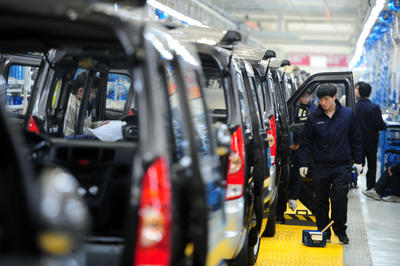Meanwhile, Southeast Asian economies more closely resembling China and offering similar comparative advantages have, of late, often found themselves outmuscled by their much larger neighbour.
In the late 1990s, as East Asia emerged from the Asian financial crisis, China’s rise was viewed by many of its neighbours as a potential threat, rather than an opportunity. But when economies from South Korea to Thailand revived and the regional production-sharing network matured, everyone seemed to benefit from China’s demand for specialised components and primary products.
Yet over the next decade, a split emerged in how China’s growth affected North and Southeast Asian economies. Between 2000 and 2010, Japan, Taiwan and South Korea saw its collective trade surplus with China soar from US$30 billion to US$210 billion. This growth came from exporting technology-intensive components to China, which provided an assembly base for the finished products ultimately exported to the West.
The story for ASEAN countries is more complex because their resource endowments are similar to China’s. Immediately after the Asian financial crisis countries across the region benefited as their overall trade balance with China shifted from a deficit in the late 1990s to a surplus of nearly US$20 billion by 2004. But by 2009 this surplus had slowly evaporated as Vietnam and Singapore moved to significant deficits and the surpluses of other countries moderated.
Evolving regional production patterns have, moreover, affected capital flows, investment rates and wage trends in ways that have benefited some East Asian countries more than others. The more developed North Asian economies are likely to benefit the most from China’s industrialisation process because they have managed to strengthen their position at the high end of the consumer electronics and IT product lines. Meanwhile, production patterns in the region are affecting investment and labour markets in Southeast Asia, thus complicating the sub-region’s efforts to moderate widening income disparities, increase productivity and escape the middle-income trap.
Real wage growth for the middle-income economies of Thailand, the Philippines and Malaysia was in line with GDP growth for much of the 1990s, but then fell off sharply and either declined or stagnated over most of the past decade. Starting in the mid-1990s, real wages in China surged by over 12 per cent annually.
Stagnant real wage growth and the post-Asian crisis decline in investment rates have largely been viewed as the result of country-specific conditions. But the region’s production network has played a significant role in enabling China to pull away from its Southeast Asian neighbours. With multinational firms managing decisions about where components are produced, location is influenced by the relative productivity of labour and wage costs, along with the logistical advantages that China’s size offers.
China’s exceptional investment rates have contributed to industrial labour productivity’s estimated 10 to 20 per cent annual increases since the mid-1990s — much higher growth than its neighbours and exceeding manufacturing wage increases. Over time, however, China’s declining unit labour costs have put pressure on countries like Malaysia to limit wage increases in order to maintain competitiveness within the production chain. Failing to do so would mean these product lines would likely migrate to lower-cost centres in Vietnam, South Asia or back to China.
Meanwhile, China has been aggressively upgrading its technological capacity while its infrastructure base has solidified. Location considerations within China are also coming into play as the rising cost of production along its coast and an expanded interior transport network motivate firms to move inland.
Surging energy prices, which lead to increased transportation costs, and the complexities of a dispersed supply chain are also encouraging some firms that had previously outsourced components to Southeast Asia to relocate their operations and associated research-and-development activities within China.
Thus, processing-related imports have fallen from over 40 per cent of China’s total imports to 30 per cent over the past decade. And as a share of its exports, they have declined from 55 per cent to about 40 per cent as production has become more integrated within China.
Ultimately, both China and the middle-income Southeast Asian countries face the same challenge of constantly innovating to achieve high-income status. It would seem they have no alternative but to move up the value chain. If they are successful, they will eventually encroach on the domain of the North Asian trio and heighten competitive pressures in East Asia more generally.
Yukon Huang is a senior associate at the Asia Program, Carnegie Endowment for International Peace, and a former country director at the World Bank in China. A version of this article was first published here by the Carnegie Endowment for International Peace.

